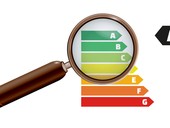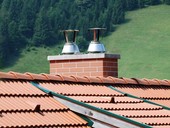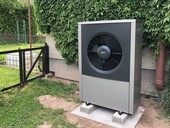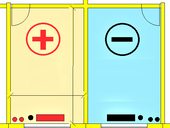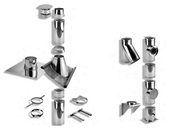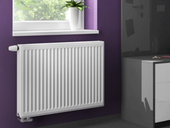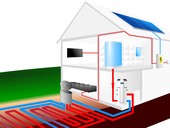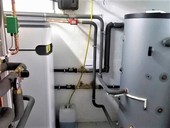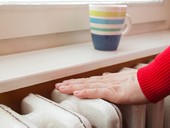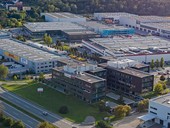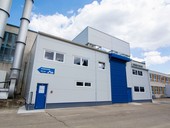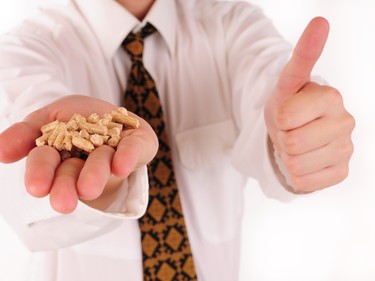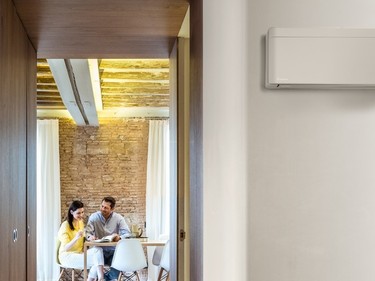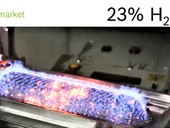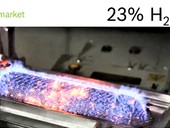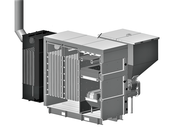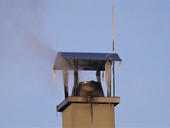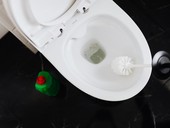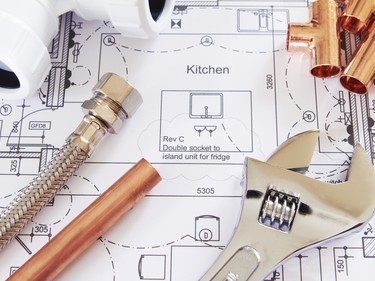The assessment of the energy performance of buildings depends on a large number of calculations, which must comply with the applicable legislation. The article presents the related structure of legal regulations, including standards and their brief characteristics.
Archiv článků od 18.1.2021 do 26.1.2022
The type of chimney determines the suitability, use, conditions of chimney installation and also plays a role in the flue gas discharge from solid, liquid and gaseous fuels. The distinction of chimneys into separate or common chimneys, system chimneys, individual and additionally lined chimneys, etc. will be described in this article.
Even heat pumps with frequency-controlled compressors are not fault-tolerant. Examples are the destruction of the frequency converter, the suction of liquid refrigerant due to the faulty operation of the expansion valve, the ignorance of service technicians, etc. Mistakes that push the economic return of the Czech Republic into the distance can be avoided.
The general term stainless steel does not describe the differences that exist between different types of stainless steel. Therefore, in the field of chimney systems, it is necessary to pay increased attention to the selection of suitable steel. Both on the part of manufacturers and chimney companies in the production of various accessories for chimney systems and, to an increased extent, also for fuel appliance operators.
The article considers the standard EN 442-2, which assumes a linear course of the temperature exponent with height for a given type of radiators. It focuses mainly on panel radiators, although it does not omit other kinds of radiators. It points to the fact that the dependence of the temperature exponent on height is not linear and increasing for a given type, as assumed by the characteristic equation of the type. Results are based on the evaluation of the data collected from the radiator manufacturers.
The heat pump with earth wells is a source of heat and cold for a university building in the center of Prague. Analyzes of measured data from the operation of this system are performed and the issue of parallel production of heat and cold in the context of sustainable development and buildings with minimal energy consumption is discussed.
High quality of the indoor environment expressed by indicators such as air temperature, relative humidity, concentration of carbon dioxide, or lighting has great impact on human health, comfort and performance. Therefore, the contribution focuses on the effect of an increase in indoor temperature on energy consumption.
The author describes a systematic procedure leading to the processing of the audit and provides an overview of the necessary documents. The elaboration of the audit and the implementation of the proposed measures is a basic prerequisite for savings. Without subsequent evaluation of results and adjustments of operating modes, etc. however, the expected savings effect may not occur.
The low heat loss in family houses enables comfortable hot air heating with air-to-air heat pumps. The authors give an example of the conditions for obtaining a subsidy from the „Nová Zelená úsporám“ (Green to Savings) program. Achieving the highest category of the NZÚ subsidy is also realistic in the „new buildings“ category.
The authors analyze the possibility of burning natural gas with an admixture of hydrogen in gas appliances. The positive and negative aspects of the hydrogen content in natural gas and recommendations for its mixing into the natural gas distribution system are presented.
The contribution describes the effect of hydrogen content ranging from 0 to 25 mol% in a mixture with natural gas on burning in household appliances. Gaseous fuels with similar combustion characteristics, in particular Wobbe index and burning velocity, can only be used in a particular household appliance as a substitute. The various chapters describe the effect of hydrogen content in natural gas on the following: Wobbe index, composition of exhaust gases; emissions of CO2, CO and NOx; burning velocity; output of burners/energy demand of appliances, efficiency of appliances; flame stability; and temperature of combustion. Recommendations on hydrogen content in natural gas for household appliances, accepted from reference literature, are set out there. In conclusion, the authors discuss the pluses and minuses of hydrogen content in natural gas and offer recommendations for hydrogen injection into natural gas distribution systems from the perspective of burning these mixtures in household appliances.
By using an electrostatic precipitator, dust emissions (TZL - solid pollutants) from the solid fuel boiler were reduced well below the level of requirements according to ČSN EN 303-5 - class 5 and the Ecodesign Directive. This work describes the design of the separator and also presents the achieved emission parameters of the boiler with an output of 250 kW.
Internal sewers can be a source of odors in a building. The penetration of odorous gases into the interior is prevented by suitably designed ventilation of sewers and installation of odor traps (slang called siphons). The article summarizes the causes of odor penetration and the principles of sewer ventilation design.
Water is characterized by high specific heat, good thermal and thermal conductivity, low dynamic and kinematic viscosity, and is therefore a popular medium for heat transfer. However, there are several types of water, and not all of them are suitable. Some properties of water can cause malfunctions.
zpět na aktuální články
